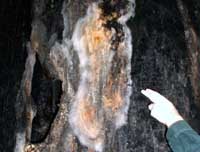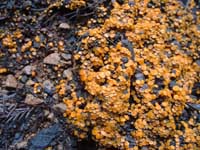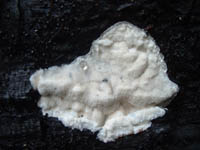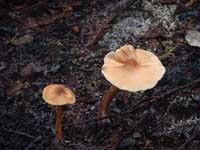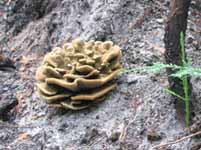|
Fire and Coast Redwood Fungi
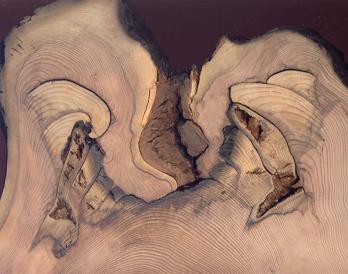 Fungi are common in the humid forests of the north coast, but they are especially eye-catching after fire. Fungi are common in the humid forests of the north coast, but they are especially eye-catching after fire.
Strange as it seems, without the two species of Poria that attack redwood sapwood after fire, there would be few basal fire cavities, and those that existed would probably be small. As fire cavities are normally what causes these tallest of trees to fall, the power of these humble fungi seems unreal.
The redwood cross section at right shows at least seven fire scars and several embedded pockets of decay that formed in the years after the fire before healing had taken place. If the scar heals over, as occurred several times in the image shown, decay ceases, but the flammable wood persists and can be burned out in subsequent fires. This can lead to rapid cavity enlargement and occasionally the sudden collapse of the tree during a fire event.
The advanced decay in the 12 inch diameter 30 year old sprout below occurred within three years after a wildfire. Note that it has extended all the way through the sapwood, but it does not migrate laterally beyond the area immediately behind the scarred cambium.
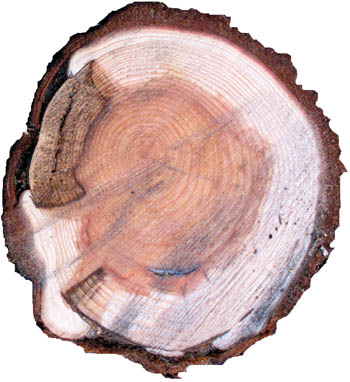
The images below show species observed in the months after the 2003 Canoe fire burned in Humboldt Redwoods State Park.
This stunning individual was observed in September 2008, two months after the Orr Fire at Montgomery Woods State Reserve. It was taken during the second light rain of the season.
Related Pages
Steve Norman
|
|


 Fungi are common in the humid forests of the north coast, but they are especially eye-catching after fire.
Fungi are common in the humid forests of the north coast, but they are especially eye-catching after fire. 
